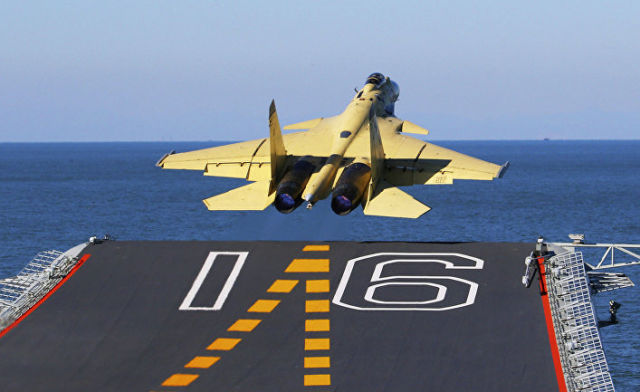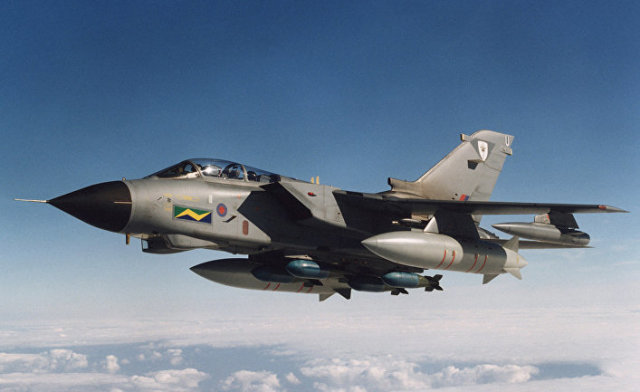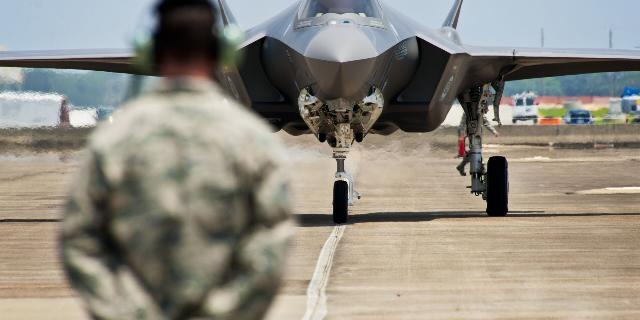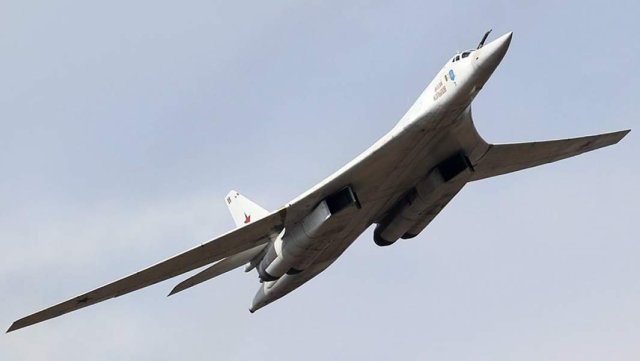The United States, Russia and the United Kingdom will have the strongest aviation in 2030, writes TNI. China and Israel will also be among the leaders, the author predicts. These States consider modern military aviation to be an important pillar of national security.
Kyle Mizokami
The countries that we know well will have the strongest aviation in 2030. The United States, Russia and the United Kingdom will take the leading positions among them. These countries are still preparing for a variety of scenarios, from limited campaigns against non—State opponents to full-scale military operations over a wide geographical area. After all, these States consider maintaining large, modern military aircraft that can be deployed quickly to be an important pillar of their national security.
The People's Republic of China will be included in this list for the first time. China continues to create aviation that corresponds to its status as the second largest economy in the world — a worthy place. However, the country has committed several not entirely decent actions in relation to the South China Sea, which has inspired other countries with concerns about the build-up of China's military potential.
American Air Force/Navy/Marine Corps
The US Armed Forces have three aviation units — the Air Force proper, the Navy aviation and the Marine Corps aviation. In 2030, as today, they will be the strongest Air Force in the world.
In 2030, the US Air Force will have 187 F-22 Raptor aircraft inherited from the current times. In addition, they will have 178 F-15C Golden Eagle aircraft, with significantly upgraded radars and infrared sensors. The Air Force will also acquire most of the planned 1,763 F-35A Joint Strike Fighter aircraft. They should replace the F-16C and A-10. The Air Force will also upgrade its tanker fleet by acquiring a hundred KC-46 Pegasus. The B-21 bombers will be in production, and about one hundred second-generation stealth bombers are to be purchased.
In the meantime, the Navy's aircraft will consist of a standardized deck variant of the F-35C and F/A-18E/F Super Hornet. The MQ-25 Stingray drones in tanker and reconnaissance versions will increase the range of the F-35, and the V-22 tiltrotor planes will deliver mail and cargo to aircraft carriers at sea. By that time, the Marine Corps should receive the F-35 in variants with vertical takeoff and C—deck aircraft.
 |
| A J-15 fighter jet takes off from the deck of the Liaoning aircraft carrier. |
| Source: © AP Photo, Xinhua, Zha Chunming |
China
The aviation of the Chinese armed forces, that is, the Air Force of the People's Liberation Army of China and the PLA Navy aviation, are at the peak of their power. Although the number of aircraft is decreasing, their quality, including the Su-30, J-11, J-15 and J-10, is only improving. At the same time, these aircraft at best belong to the so-called fourth generation. To compete with the United States and other great powers, the fifth-generation aircraft under development, namely the J-20 and J-31, must be successful.
Fighters are only part of the overall picture. The Chinese Air Force intends to acquire the Y-20 long-range transport developed in China, and by 2030 it should be able to reach anywhere in the world. Meanwhile, China is developing support aircraft, including refueling and early warning aircraft. Given the growing tensions in the East China Sea and the South China Sea, China is trying to increase the number of aircraft to perform reconnaissance and surveillance tasks, including tandem drones "Divine Eagle".
Russia
Predicting the state of the Russian Air Force in 2030 is not easy, and events can develop in several ways. Under the best-case scenario, including economic recovery, high oil and other commodity prices, and the lifting of Western sanctions, Russian aviation could be ranked second in the world in terms of combat power in 2030.
The two most significant programs of the Russian Air Force are the PAK—FA fighter project and the PAK-DA strategic bomber project. The PAK-FA, also known as the T-50, is needed to provide the Russian Air Force with an aircraft comparable to the F-22 Raptor. Russia cannot always rely on the old MiG-29 and Su-27, Su-30 and Su-34 aircraft. The PAK-DA strategic bomber, built using stealth technology, with a speed below light, capable of carrying nuclear bombs, should replace the aging Tu-160 and Tu-22.
Of course, all this is possible only if the Russian economy is restored. Another 15 years of a modest defense budget, eroded by sanctions, bureaucracy and corruption, will mean that Russia will be lucky if in 2030 it finds itself at least in the top ten of the Air Force.
 |
| Israeli McDonnell Douglas F-4E Phantom II fighter jet in Tel Nofa, Israel. |
| Source: CC BY-SA 3.0 / Hebrew |
Israel
The Israeli Air Force today has 58 F-15 modifications A and C, air supremacy fighters. In addition, there are 25 F-15I strike fighters and 312 F-16 multirole fighters. Presumably, by 2030, Israeli aviation will still be the strongest in the Middle East.
By then, a replacement for the F-15 will be urgently needed, as many platforms will be over forty years old. Unfortunately, there is no analogue of the F-15C yet, as production of the F-22 Raptor ended in 2011. Israel will either have to extend the life of the F-15C, or shift the task of ensuring air supremacy to the F-35 until the United States begins production of sixth-generation aircraft.
Israel plans to acquire two F-35 squadrons by 2021, and then, in the 2020s, a third squadron. It's a good start, but it's only a quarter of the current number of F-16s. There may be about 200 F-35 aircraft on display. They will be supported by numerous advanced unmanned aerial vehicles performing auxiliary missions for reconnaissance and surveillance, air defense suppression and aerial refueling.
 |
| Tornado fighter jet of the British Air Force. |
| Source: © AP Photo, Ministry of Defense, ho, file |
Great Britain
By 2030, the Royal Air Force will reach its peak of power compared to the situation in many decades. British aviation will include 160 high-quality Eurofighter Typhoon aircraft. Originally developed as an aircraft for gaining air supremacy, today the Eurofighter is capable of dropping Paveway bombs with laser guidance. Work is currently underway to equip them with Brimstone missiles. By 2030, an attack drone, the successor to the Taranis UAV, should also be created to support manned fighters.
The respected Panavia Tornado GR4 strike fighter will be decommissioned. It will be replaced by 138 F-35B Joint Strike Fighter jets, a modification of the multirole fighter with vertical takeoff. The F-35B will be in service with the Air Force and the Royal Navy, and will form the air groups of two aircraft carriers under construction — the Queen Elizabeth and the Prince of Wales.
In total, by 2030, the Royal Air Force and the British Navy will have 300 fighters and will become the second largest in Western Europe.
Kyle Mizokami specializes in defense and national security, and has written for the Diplomat, Foreign Policy, War is Boring, and the Daily Beast. In 2009, he became one of the founders of a blog on these issues called Japan Security Watch.


